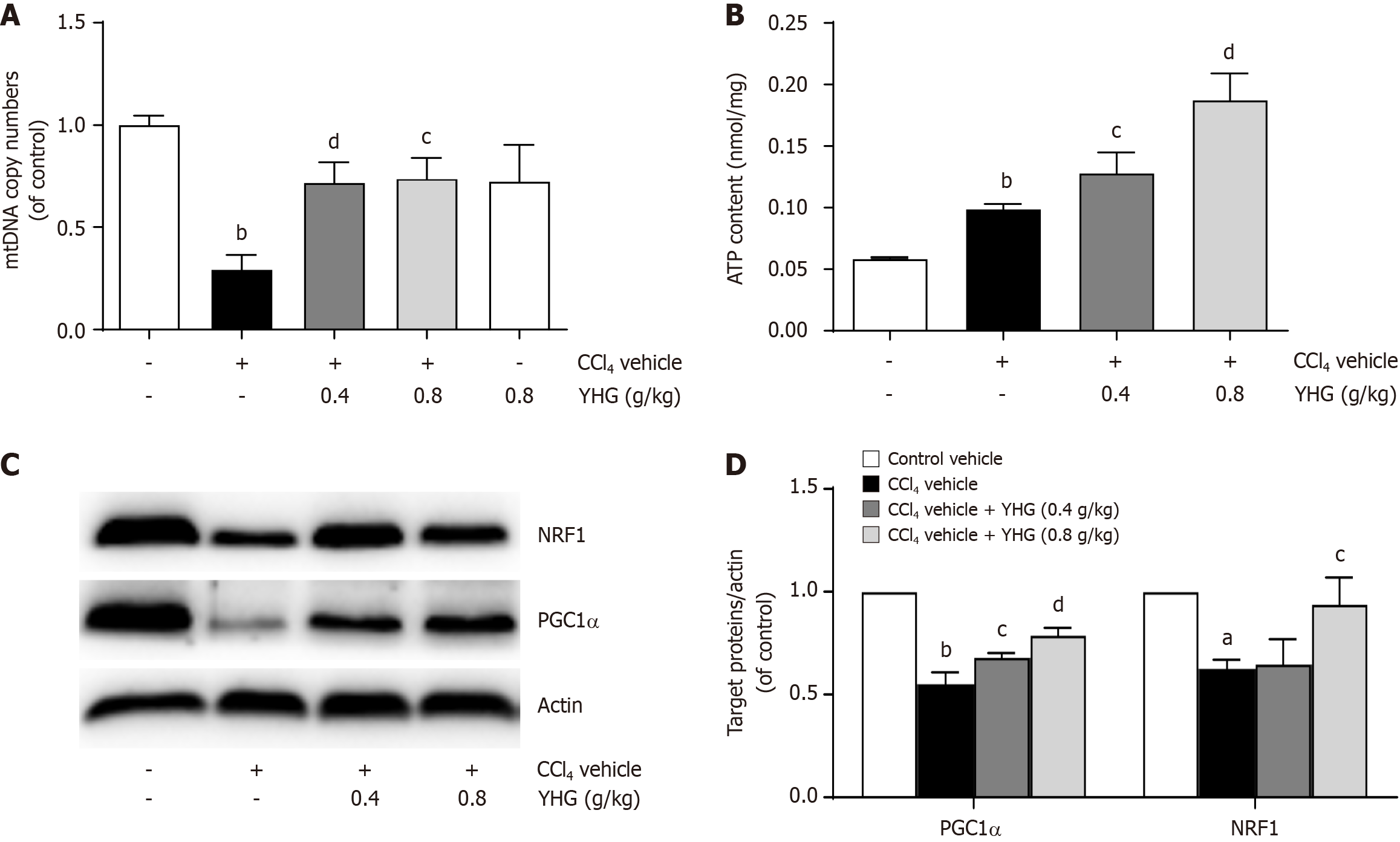Copyright
©The Author(s) 2024.
World J Hepatol. Feb 27, 2024; 16(2): 264-278
Published online Feb 27, 2024. doi: 10.4254/wjh.v16.i2.264
Published online Feb 27, 2024. doi: 10.4254/wjh.v16.i2.264
Figure 6 Yinhuang granule induced mitochondrial biogenesis in carbon tetrachloride-treated mice.
A: Liver mitochondrial DNA (mtDNA) copy numbers (n = 5); B: Liver adenosine triphosphate level (n = 5); C: The expression of liver peroxisome proliferator-activated receptor gamma coactivator 1 alpha (PGC1α) and nuclear respiratory factor 1 (NRF1) was detected by Western blot, and b-actin was used as a loading control. The results represent three independent experiments; D: The protein bands of PGC1a and NRF1 were normalized to basal b-actin expression (n = 3). Data were expressed as mean ± SEM. aP < 0.05, bP < 0.01 vs control vehicle; cP < 0.05, dP < 0.01 vs carbon tetrachloride vehicle. ATP: Adenosine triphosphate; CCl4: Carbon tetrachloride; YHG: Yinhuang granule; PGC1α: Proliferator-activated receptor gamma coactivator 1 alpha; NRF1: Nuclear respiratory factor 1.
- Citation: Ouyang H, Miao H, Li Z, Wu D, Gao SC, Dai YY, Gao XD, Chai HS, Hu WY, Zhu JF. Yinhuang granule alleviates carbon tetrachloride-induced liver fibrosis in mice and its mechanism. World J Hepatol 2024; 16(2): 264-278
- URL: https://www.wjgnet.com/1948-5182/full/v16/i2/264.htm
- DOI: https://dx.doi.org/10.4254/wjh.v16.i2.264









